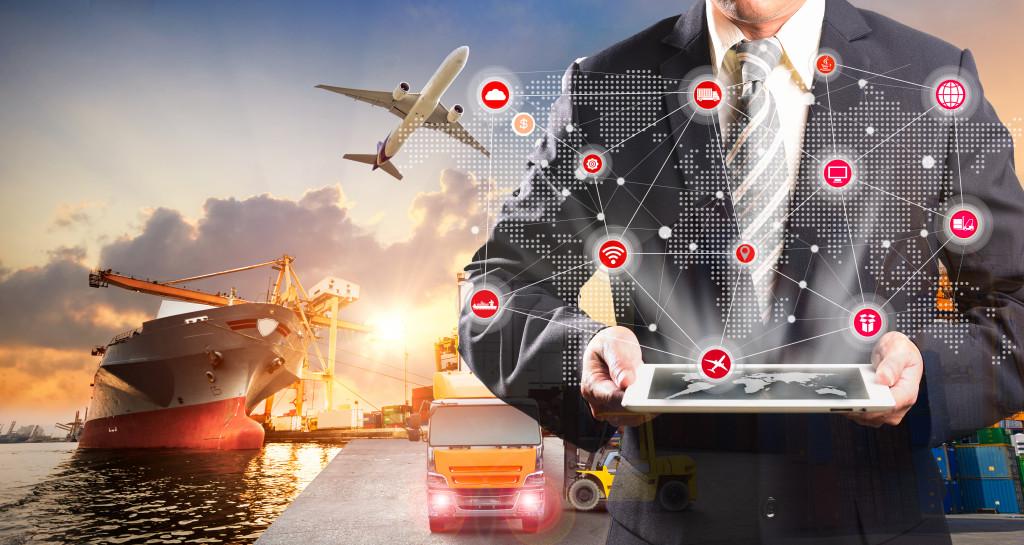As the transportation and logistics industry grows, the demand for innovative technology solutions increases. To stay ahead of the curve, it’s essential to be aware of the latest trends and changes that will impact the sector in 2022. Here are eight key technology trends to watch.
- 1) The Rise of Artificial Intelligence (AI) and Machine Learning (ML)
- 2) Increased Use of Blockchain
- 3) Greater Focus on Sustainability
- 4) The Continued Growth of E-commerce
- 5) A Rise in On-Demand Services
- 6) The Growth of the Sharing Economy
- 7) Big Data and Analytics
- 8) The Internet of Things (IoT)
- Why Is Keeping Up With Transportation and Logistics Trends Important?
- How Can the Industry Keep Up With the Latest Trends?
1) The Rise of Artificial Intelligence (AI) and Machine Learning (ML)
As businesses face increasing pressure to optimize efficiency and reduce costs, AI and ML will become more widely used throughout the transportation and logistics industry. These technologies can help automate order processing, shipment tracking, and fleet management.
2) Increased Use of Blockchain
Blockchain is a distributed database system that allows for secure, transparent tracking of transactions. It has already begun disrupting the transportation and logistics industry, and its use is expected to grow exponentially in the coming years. Blockchain can track shipments, verify provenance, and streamline supply chain management.
3) Greater Focus on Sustainability
With the rise of global climate change concerns, there is a growing focus on sustainability within the transportation and logistics industry. This includes a shift towards electric vehicles, the use of renewable energy, and the implementation of green shipping practices.
4) The Continued Growth of E-commerce
E-commerce sales are expected to reach $6.54 trillion by 2023, which will significantly impact the transportation and logistics industry. As more businesses turn to online sales, there will be an increased demand for efficient delivery and logistics solutions.
5) A Rise in On-Demand Services
The popularity of on-demand services such as Uber and Airbnb has increased expectations for on-demand delivery and logistics services. This includes same-day or next-day shipping and real-time tracking and notifications.
6) The Growth of the Sharing Economy

The sharing economy is expected to grow from $14 billion in 2014 to $335 billion by 2025. This growth will significantly impact the transportation and logistics industry, as companies will need to find ways to efficiently share resources such as vehicles, warehouses, and delivery routes.
7) Big Data and Analytics
The transportation and logistics industry generates a large amount of data, which can be used to improve operations and decision-making. By harnessing the power of big data and analytics, businesses can optimize their supply chains, better target customers, and reduce costs.
8) The Internet of Things (IoT)
The IoT refers to the interconnectedness of physical devices and systems. It is being used to track assets, monitor shipments, and automate tasks in the transportation and logistics industry. The trend is expected to impact the industry in the coming years significantly.
These are just a few of the technology trends that will shape the transportation and logistics industry in the years to come. To stay ahead of your competition, you must watch these trends closely and understand how they can contribute to your business.
Why Is Keeping Up With Transportation and Logistics Trends Important?
The transportation and logistics industry is constantly evolving, and it can be challenging to keep up with the latest changes. However, it’s essential to stay up-to-date on industry trends to make informed decisions about your business. Even with heavy haul trucking companies, the innovations are proving a necessity. By understanding the latest technology trends, you’ll be better positioned to take advantage of new opportunities and optimize your operations.
How Can the Industry Keep Up With the Latest Trends?
There are a few key ways to stay up-to-date on the latest transportation and logistics trends:
- Read industry news sources: There are some excellent transportation and logistics news sources that can help you stay informed about the latest industry trends. A few of our favorites include FreightWaves, Supply Chain Dive, and The Loadstar.
- Attend industry events: Industry events are a great way to network and learn about the latest trends. If you’re looking for a transportation and logistics event to attend, check out our list of the top conferences and trade shows.
- Connect with other professionals: Social media is a great way to connect with other professionals in the transportation and logistics industry. LinkedIn is a precious resource, as it’s home to many industry groups and discussion forums.
- Use technology: Many excellent transportation-focused technology solutions can help you stay up-to-date on the latest trends. For example, fleet management systems (FMS) provide real-time data that can be used to improve decision-making.
- Work with a partner: Working with a transportation and logistics partner is a great way to stay abreast of the latest industry trends. Partners can provide insights and guidance on how to navigate the ever-changing landscape best.
Technology is changing the transportation and logistics industry, and it’s crucial to stay up-to-date on the latest trends. By understanding these changes, you’ll be better positioned to take advantage of new opportunities and optimize your operations.



